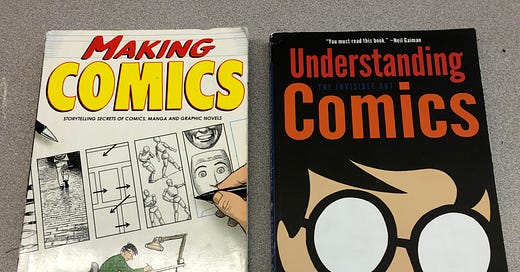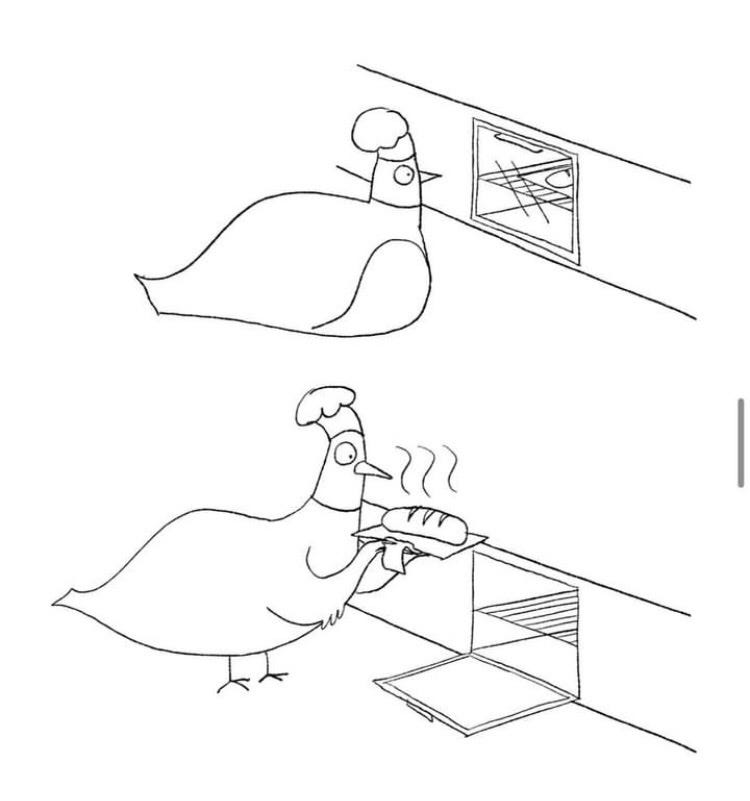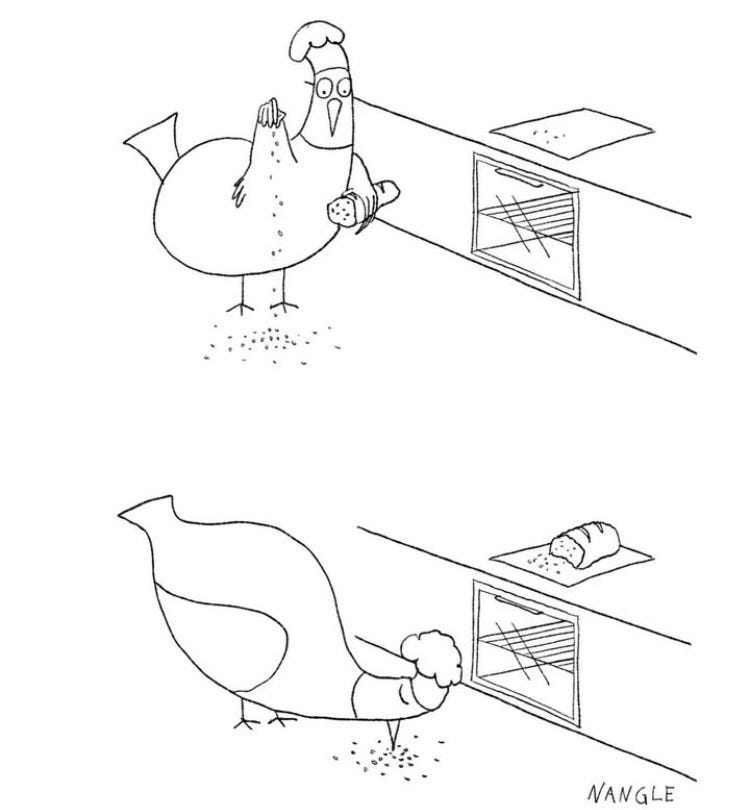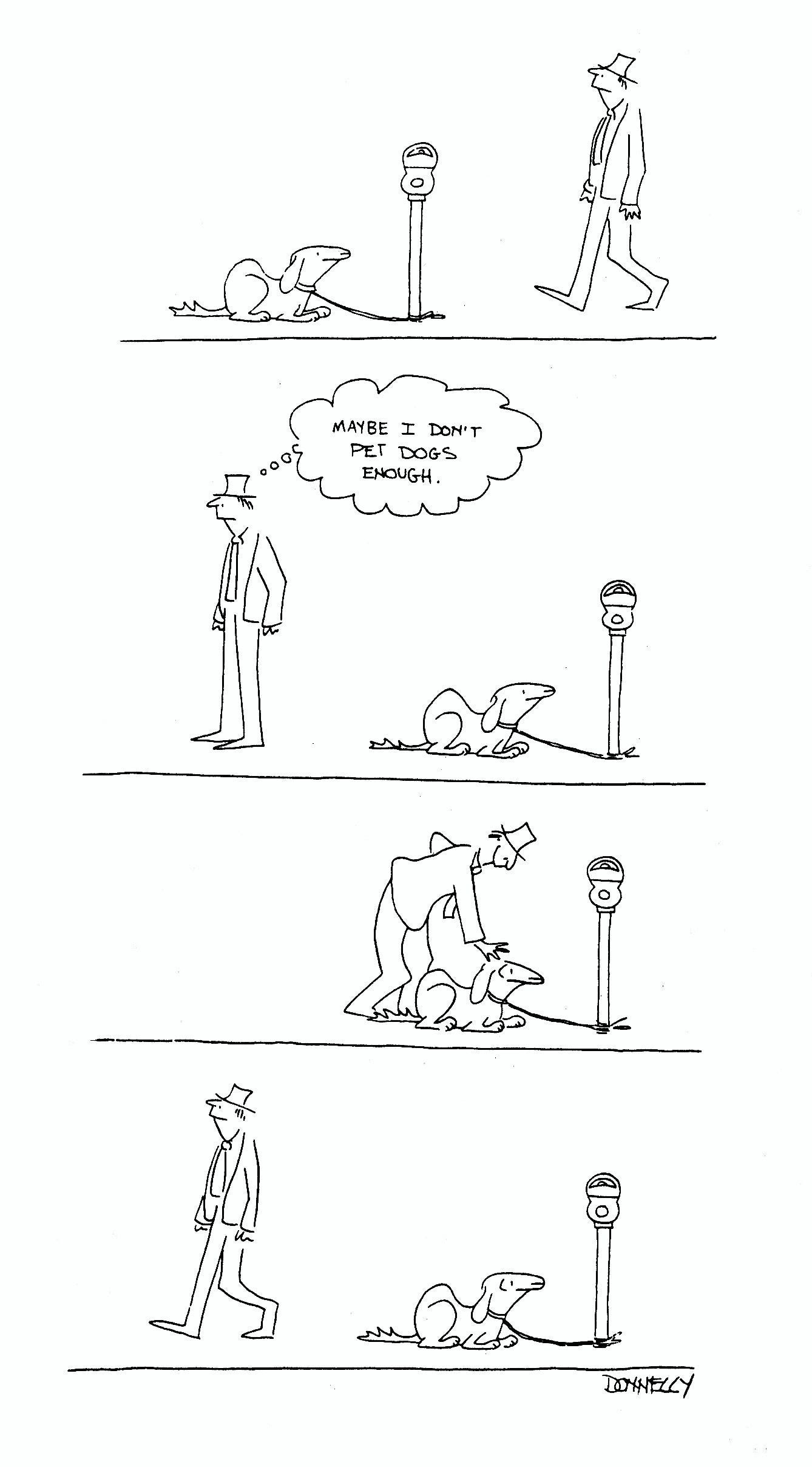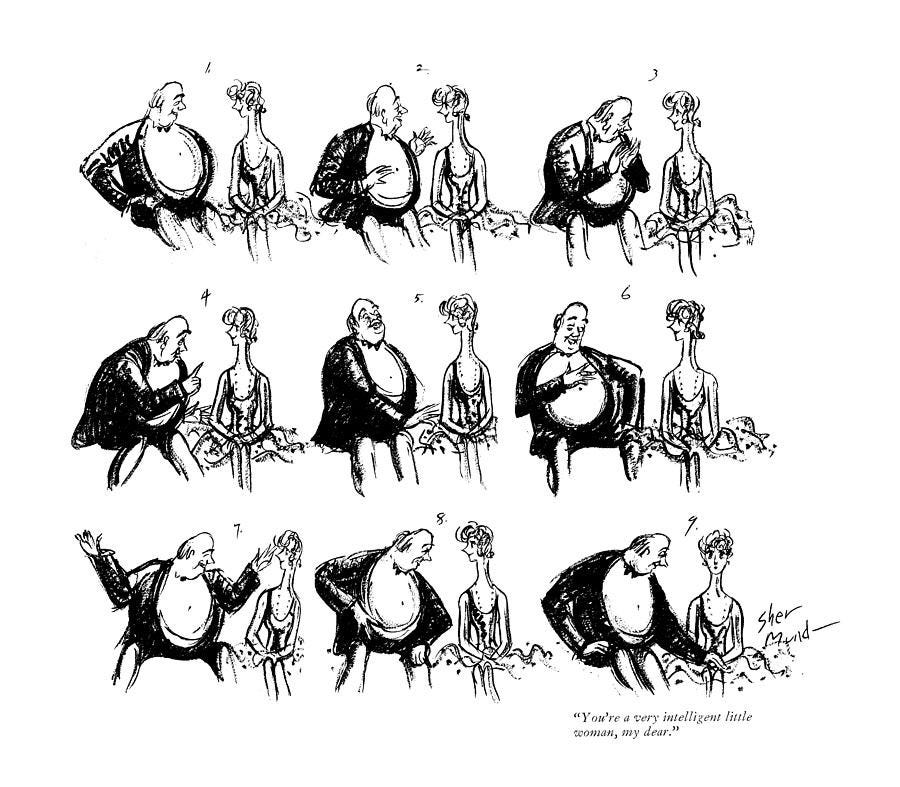Brainstorming Moment to Moment Cartoons
In my Comics class we start with gag cartoons. I figure it’s the easiest way to start because the students only have to draw one image. After that, we read Chapter 1 from the books Understanding Comics and Making Comics, both by Scott McCloud. In these, McCloud proposes a definition for “comics“ and, interestingly, points out that gag cartoons do not fit within his definition. According to McCloud, to be a comic there has to be multiple images arranged sequentially in space. A gag cartoon only has one image, so it’s not a comic. Perhaps that’s why we called them cartoons and not comics. I don’t know if I fully agree with McCloud’s definition, because I do think the way we read a gag cartoon, our eyes bouncing around elements of an image, down to the caption, back up to the image, is, in a way, not that far removed from the way we read panel by panel in a multI-panel comic. But anyway …
In these chapters we also learn about McCloud’s categorizations of different types of panel transitions in comics. When you go from one panel to the next in a comic, it generally falls into a handful of types: moment to moment, action to action, subject to subject, scene to scene, aspect aspect, or just totally random.
I particularly love moment to moment panel transitions. They show one single action broken down over the course of multiple panels. The effect feels like it slows down time, like slow motion in TV or movies. It can also lend a sense of drama to a moment in a story.
So after we do gag cartoons, my students do a short moment to moment comic. Though the New Yorker mostly focuses on single panel cartoons, they do at times have cartoons with a sequence of images. I would love to get a moment to moment style comic/cartoon into the New Yorker someday, and so I’m taking this opportunity to brainstorm some ideas to possibly submit.
I think the trick for it to work as a New Yorker cartoon though is it can’t just slow down the motion of an action, but it needs to end on a punchline. The moment to moment transitions need to lead the viewer down one path, and then the final image needs to surprise them with something they didn’t see coming.
I submitted one cartoon like this to the New Yorker and it was rejected. I don’t know if this is relatable or not, but as a person who uses AirPods fairly frequently, this thing happens sometimes where I drop them and when the AirPod case hits the ground it’s almost like it explodes, with the earbuds flying off in different directions. So this cartoon is meant to visualize and dramatize the hopefully relatable situation of dropping AirPods. My wife, on the other hand, doesn’t use AirPods, and was confused by this comic, so perhaps that’s why it didn’t sell.
Here are a few other examples of moment to moment-ish, multi-image style cartoons/comics from the New Yorker:
One I can’t stop thinking about by Anjali Chandrashekar where a woman tries to wash her hands in a bathroom, which progresses into a balletic dance, and then only when she gives up and leaves does the water turn on. This one is probably the most indicative of the type of moment to moment cartoon I aspire to do. It sets you up thinking one thing is happening which transforms into something else then ends on an unexpected punch line. So good.
A Jared Nangle cartoon from a recent issue that is also very much in the vein of what I’m describing. A bird pulls a loaf of baked bread out of an oven, crumbles it onto the floor, then pecks at the crumbs. Genius!
Liza Donnely’s first cartoon for the New Yorker in which a man decides he should pet dogs more.
A very early one by one of the great and first New Yorker cartoonists, Barbara Shermund.
Some ideas I came up with:
Panel by panel of a bird flying across the sky from left to right in the panels. The last panel is a close-up on the bird’s face and a thought bubble thinking, “Did I leave the oven on?”
On the left you see a notebook on the ground. Moving to the right there is a trail of books and pens and pencils and school supplies. At the far right is a person walking oblivious to the fact that their backpack is unzipped and everything has fallen out.
There is a long horizontal strip of trash and knocked over trash cans all over the ground and at the end on the right side is a garbage truck.
Long horizontal scene of destroyed household stuff and then on the right side is a dog with a tennis ball in his mouth and the owner is upset.
I guess I got kind of stuck on the long horizontal format.
What about you guys? Can you come up with any good ideas for a series of moment to moment panel transitions that end in some humorous way?

